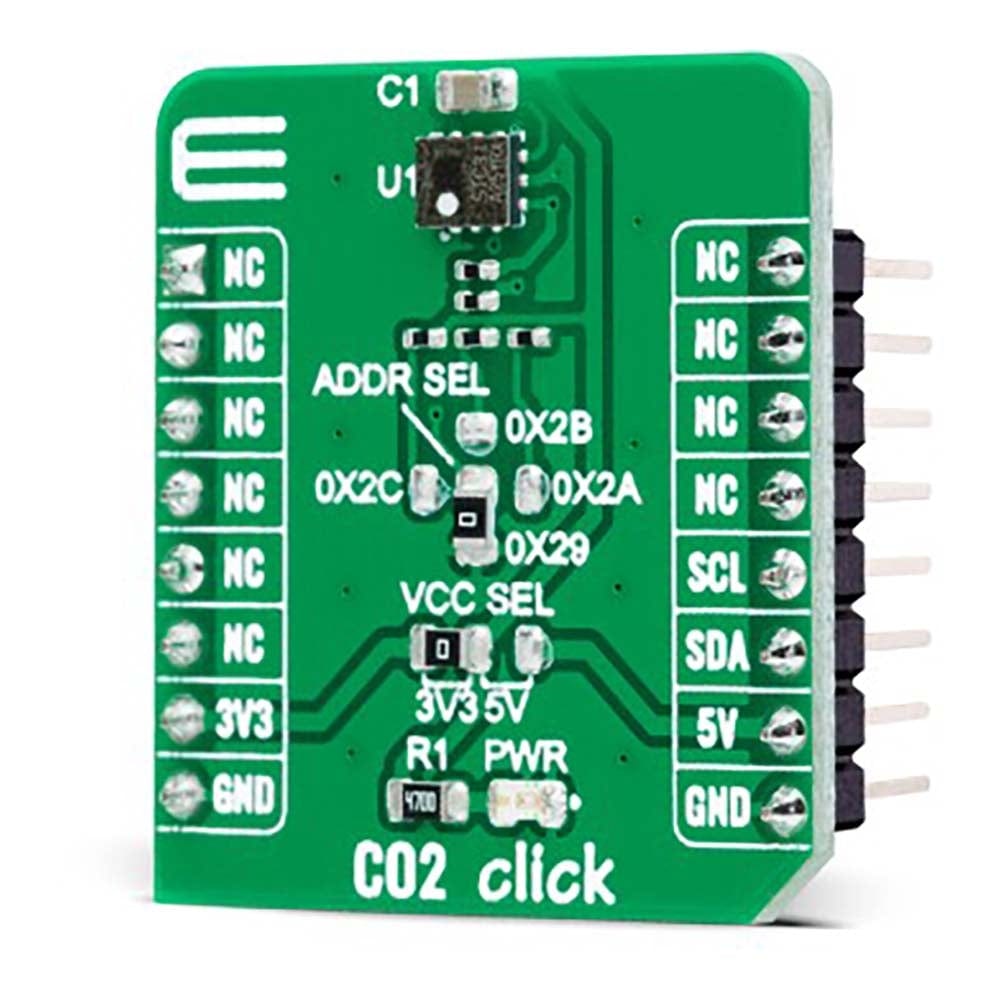
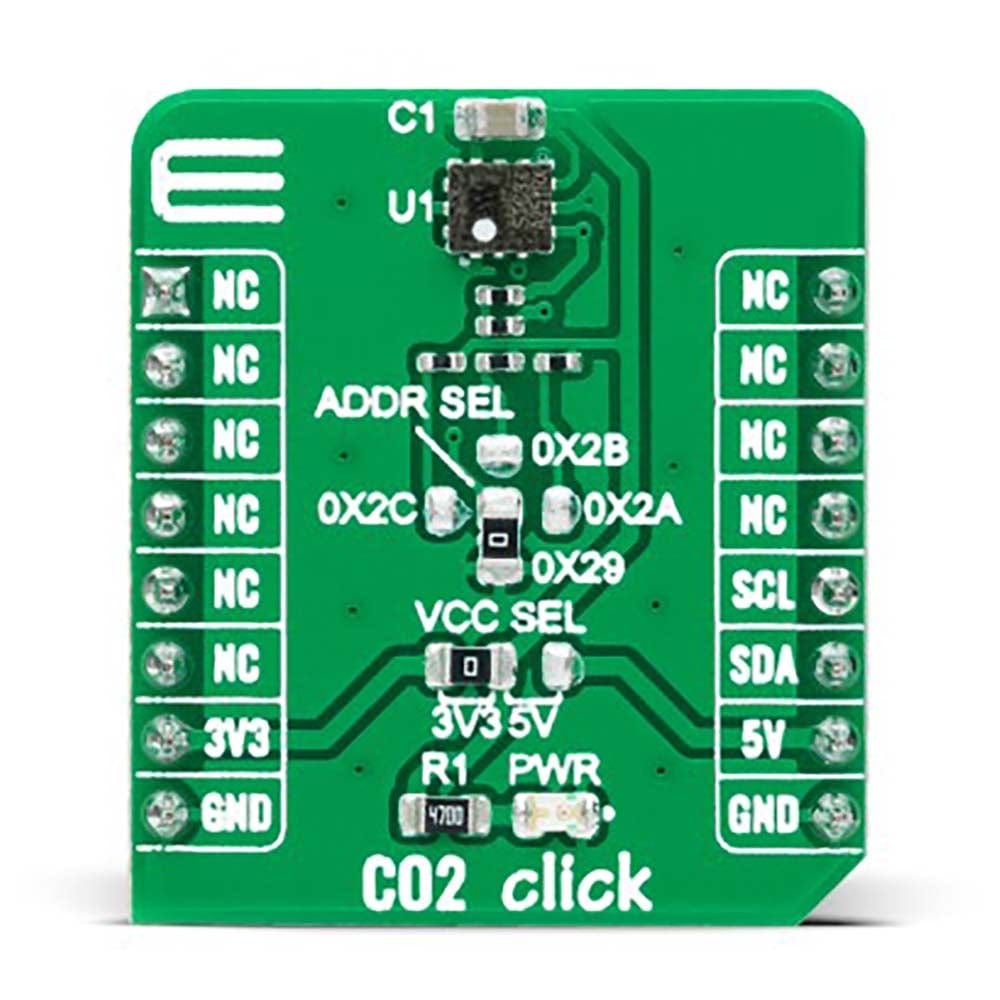
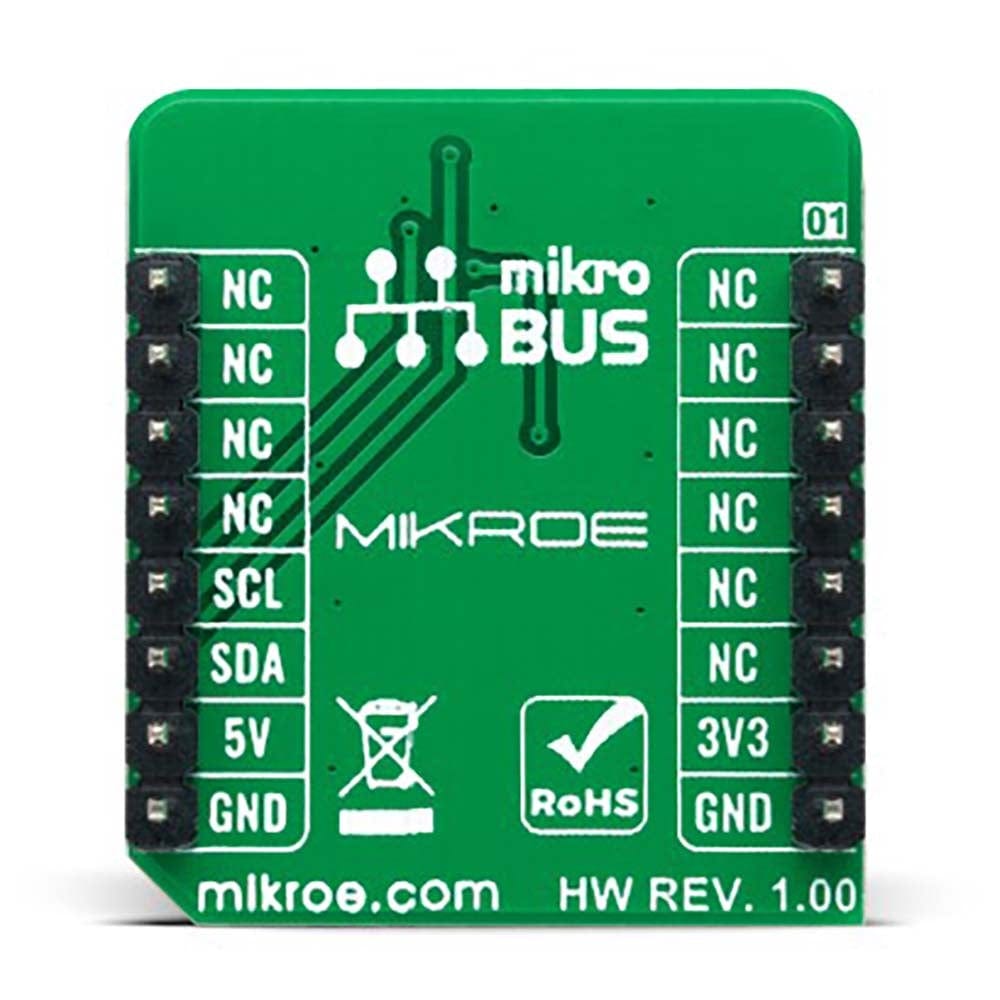
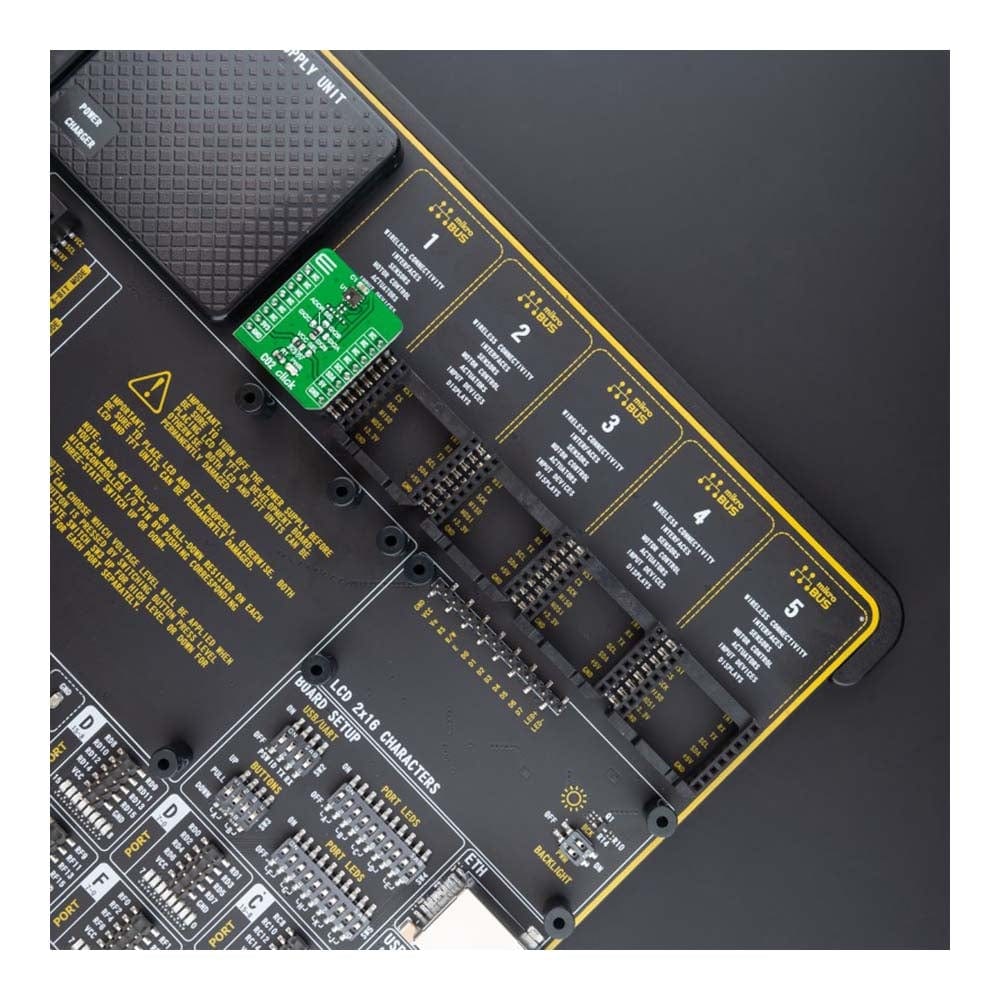
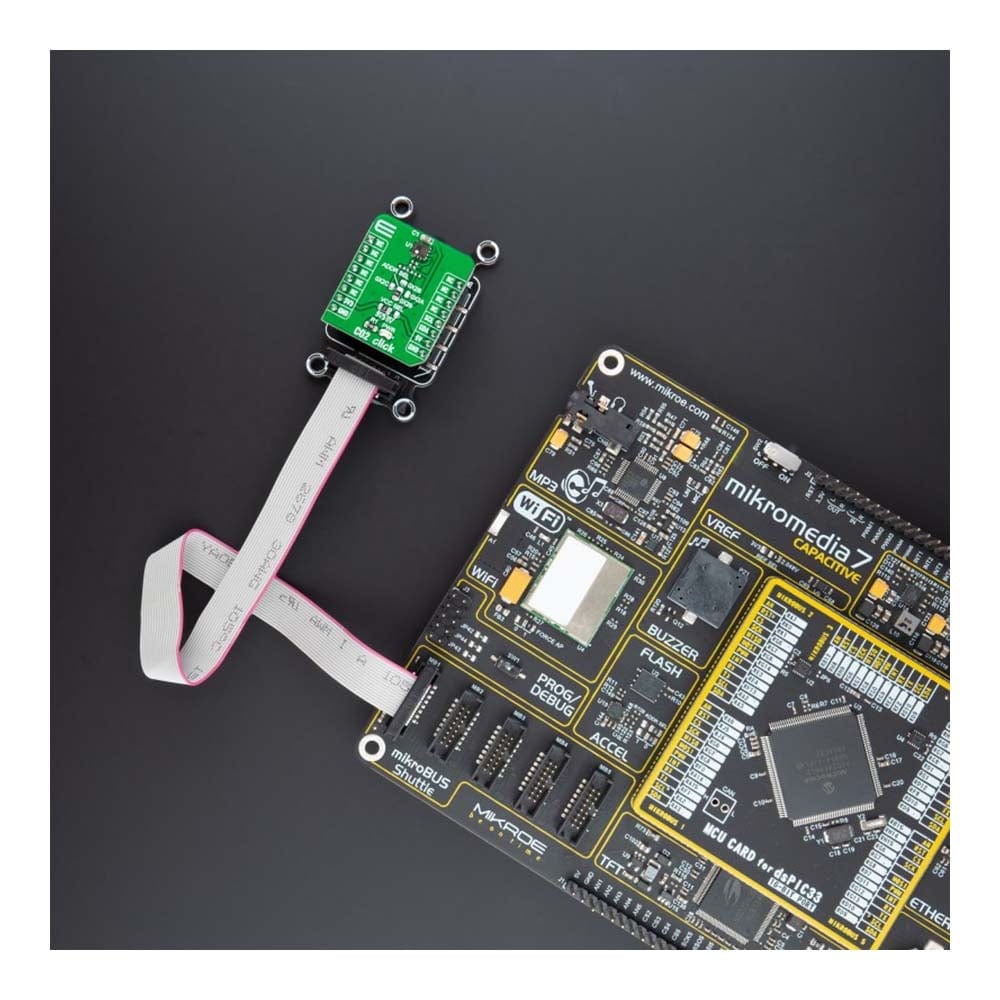
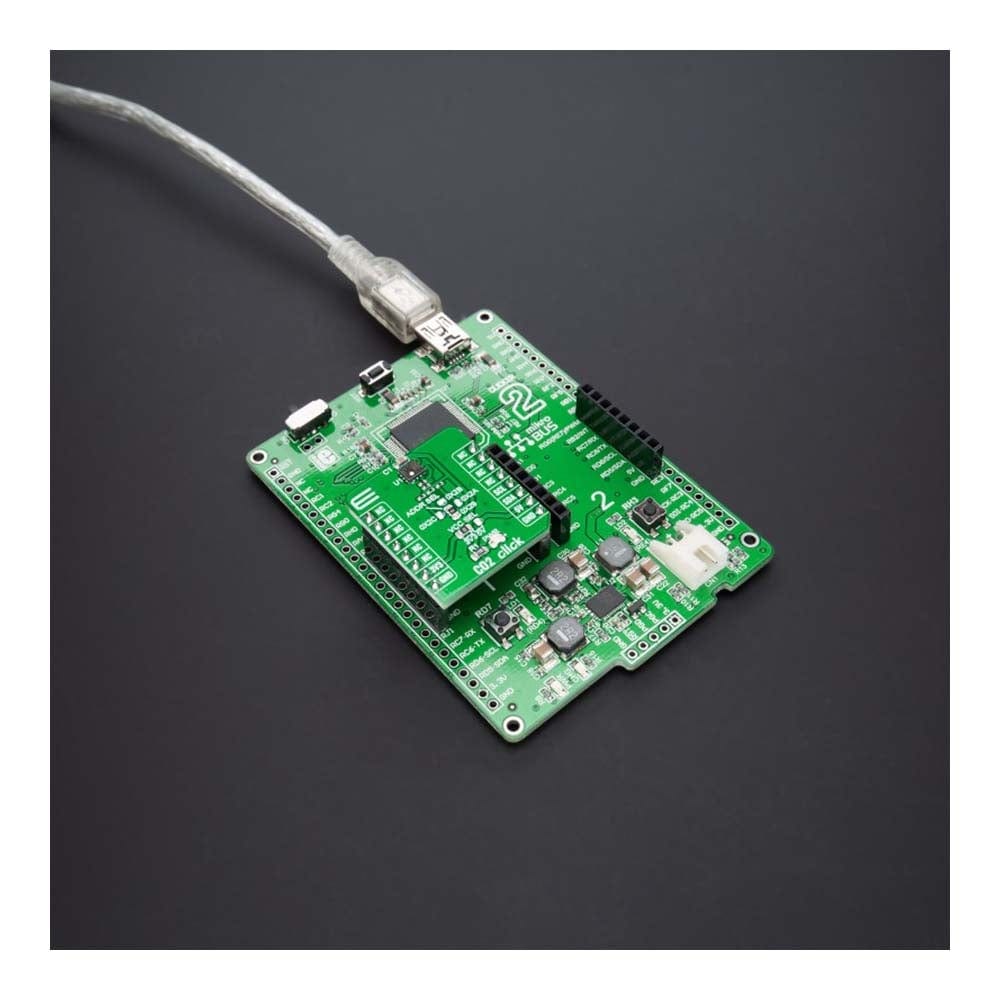
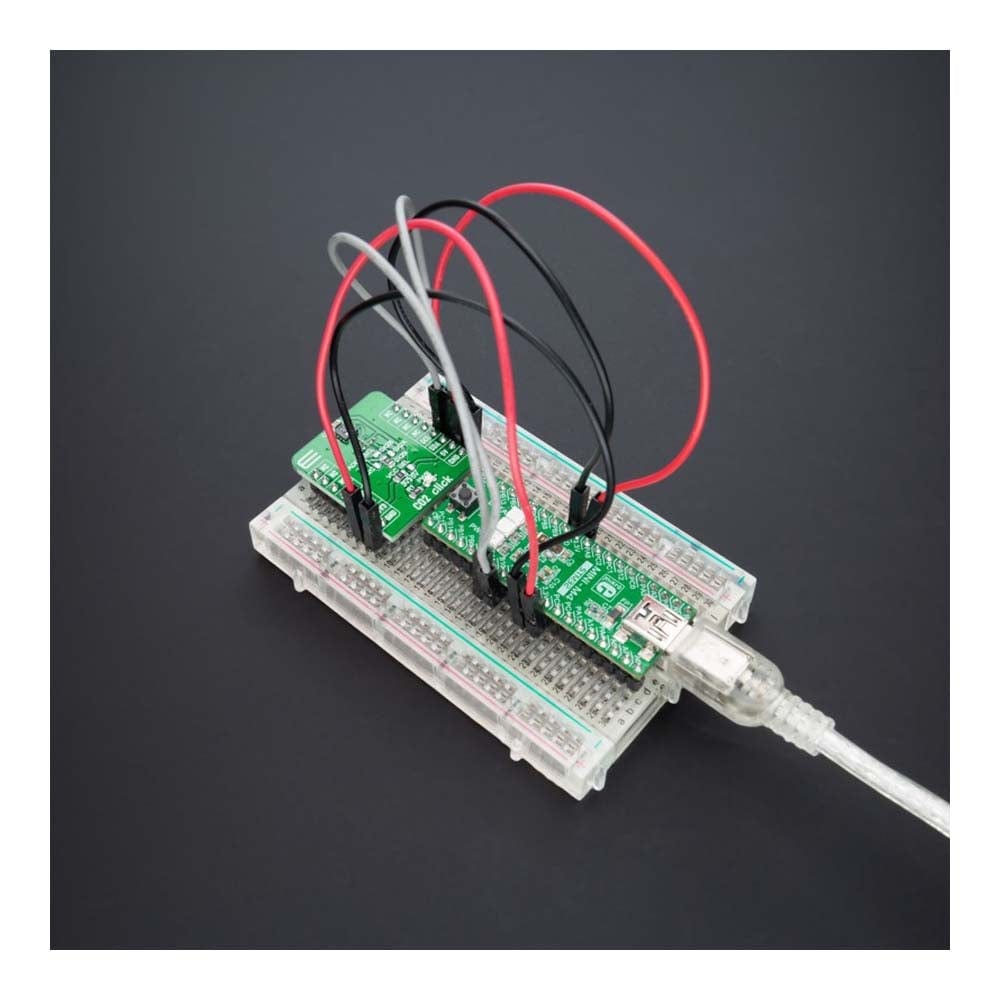
Overview
The CO2 Click Board™ is a compact add-on board that contains Sensirion’s miniature CO₂ sensor. This board features the STC31, a gas concentration sensor designed for high-volume applications. The STC31 utilizes a revolutionized thermal conductivity measurement principle, which results in superior repeatability and long-term stability. The outstanding performance of these sensors is based on Sensirion’s patented CMOSens® sensor technology, which combines the sensor element, signal processing, and digital calibration on a small CMOS chip. It features a digital I2C interface, which makes it easy to connect directly to MCU. This Click board™ represents an ideal choice for health, environmental, industrial, residential monitoring of high CO2 concentrations and applications where reliability is crucial.
The CO2 Click Board™ is supported by a mikroSDK compliant library, which includes functions that simplify software development. This Click board™ comes as a fully tested product, ready to be used on a system equipped with the mikroBUS™ socket.
Downloads
Das CO2 Click Board™ ist eine kompakte Zusatzplatine, die den Miniatur-CO₂-Sensor von Sensirion enthält. Diese Platine verfügt über den STC31, einen Gaskonzentrationssensor für Anwendungen mit hohem Volumen. Der STC31 verwendet ein revolutionäres Messprinzip der Wärmeleitfähigkeit, das zu überlegener Wiederholbarkeit und Langzeitstabilität führt. Die herausragende Leistung dieser Sensoren basiert auf der patentierten CMOSens®-Sensortechnologie von Sensirion, die das Sensorelement, die Signalverarbeitung und die digitale Kalibrierung auf einem kleinen CMOS-Chip kombiniert. Es verfügt über eine digitale I2C-Schnittstelle, die den direkten Anschluss an MCU erleichtert. Dieses Click Board™ ist die ideale Wahl für die Überwachung hoher CO2-Konzentrationen in den Bereichen Gesundheit, Umwelt, Industrie und Wohnen sowie für Anwendungen, bei denen Zuverlässigkeit entscheidend ist.
Das CO2 Click Board™ wird von einer mikroSDK-kompatiblen Bibliothek unterstützt, die Funktionen enthält, die die Softwareentwicklung vereinfachen. Dieses Click Board™ wird als vollständig getestetes Produkt geliefert und ist bereit für den Einsatz auf einem System, das mit der mikroBUS™-Buchse ausgestattet ist.
| General Information | |
|---|---|
Part Number (SKU) |
MIKROE-4725
|
Manufacturer |
|
| Physical and Mechanical | |
Weight |
0.02 kg
|
| Other | |
Country of Origin |
|
HS Code Customs Tariff code
|
|
EAN |
8606027389542
|
Warranty |
|
Frequently Asked Questions
Have a Question?
Be the first to ask a question about this.







